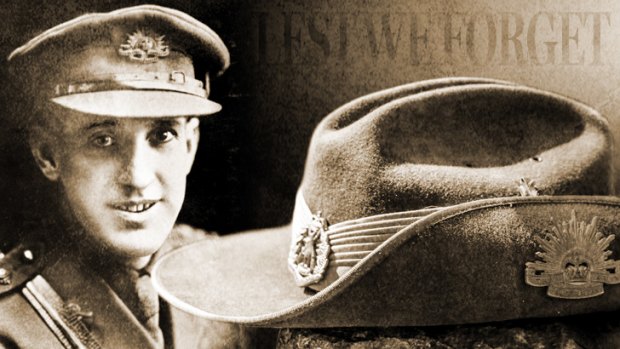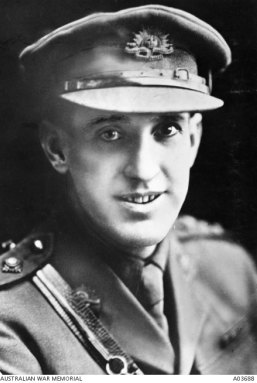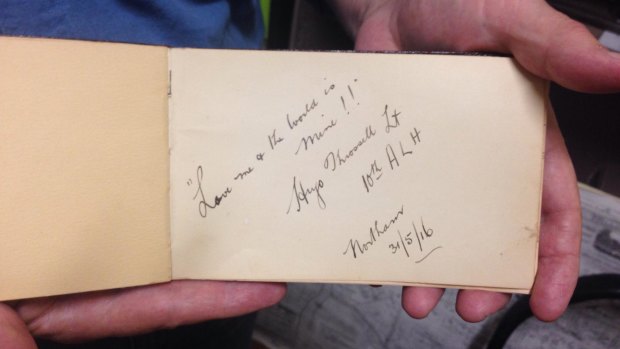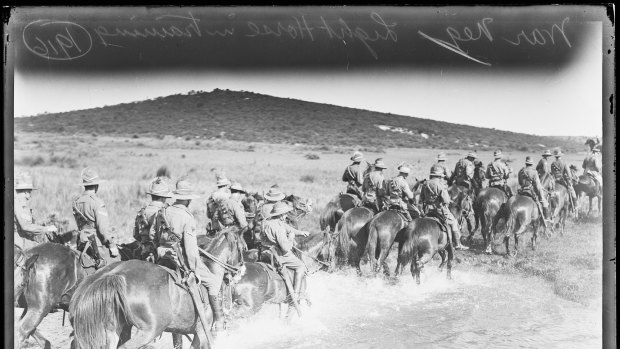A century on from the final year of the Great War, there are no survivors. Just monuments of stone and wood, black and white images, ink and artefacts.

A street in Dalkeith and a road in Mt Lawley are named after Hugo Throssell.
Yet in just about every town and city in the big state, Western Australia, there are streets named after local heroes and cenotaphs for the dead so Lest We Forget. The war and its aftermath are deeply woven into our history, into our everyday life, even when we don't notice.
The war echoes through the years and echoes through our streets, and in the lead up to Anzac Day, WAtoday will explore the people, places and issues the Great War shaped in this state, and the ways it remains a part of our modern culture.
In Part One, we start with the story of Hugo Throssell - one name among 32,231 men and women from WA who served, and whose life and death reflects the complicated legacy the war has left our society.
Hugo Throssell VC: Warrior for peace
Trucks strain in low gear up the steep hill. Cars swoosh past, straining to overtake. Planes swoop on final approach to the runway at Perth's International Airport.
In between all these roaring engines you can hear the bush: wind, birds, the vast space of the Swan Coastal Plain. For a man whose life was defined by war and peace it's a fitting place for a memorial.
Son of WA's second ever Premier, Captain Hugo Vivian Hope Throssell won the Victoria Cross at Gallipoli in 1915, where he helped repulse Turkish attacks on a hilltop held by the Tenth Light Horse.

Captain Hugo Vivian Hope Throssell.Credit: Australian War Memorial
Most Victoria Crosses are awarded posthumously. Cut and formed from the remains of cannons captured by the British in the Crimean War, the VC is the highest military honour Commonwealth soldiers can attain, and Throssell earned it defying his wounds and the ferocity of the attacks to hold the position.
He was evacuated to London to recover, and it was there he met an Australian author, journalist and eventual co-founding member of the Communist Party of Australia - Katharine Susannah Pritchard.
So far so romantic, yet their meeting was to become a hinge that exposed deep divisions in Australia; for Throssell was not the hero the leaders of the nation wanted him to be.
"He was a heroic figure, promoted by the authorities, and he gave speeches during the war to boost recruitment. He was the embodiment of the ideal Edwardian man."
Paul Bridges is the curator of the Swan Guildford Historical Society, a former Communist himself, who collects military memorabilia, including an autograph book signed by Hugo Throssell, whose imprint to an admirer from May 1916 reads "love me and the world is mine."

Hugo Throssell's autograph.Credit: David Allan-Petale
"He would have signed that at a rally for the war where he played up that he was a single man. But he was longing to meet up with Katharine and they didn't marry until he came back from the war because he didn't want to leave her a widow.
"He went back to the Tenth Light Horse and fought in Palestine where his beloved brother Ric was killed. And when he returned home he linked up with Susannah again, and this is where everything changes."
The couple married and in mid-1919 Throssell gave a speech to local Peace Day celebrations where he stated that war had made him "a pacifist and a socialist".
"He was a war hero, highly educated, came from an upper middle class family, won awards in sport. So the impact of his renunciation of the war and embracing socialism was a great shock," Bridges said.

Australian Light Horse troops in training in 1916.
The decision to speak out cost Throssell dearly - his business prospects never succeeded, spiralling into debt as he bought up blocks of land and the economy dived during the Great Depression.
Saddled with debts and suffering depression, Throssell shot himself on the verandah of his home in Greenmount in February of 1933. Just a day prior he had tried to hock his VC to buy movie tickets for his son Ric, named after the brother he lost in the war.
After the war comes the battle
At least 325 serving and former Australian Defence Force personnel died by suicide between 2001 and 2015, according to a major report released in mid-2017 that highlighted the dangers vulnerable servicemen can face when leaving the military.
Post Traumatic Stress Disorder (PTSD) and the effects conflict and service can have is better understood now compared to Throssell's era. But the mental health of veterans remains an important issue, especially with modern day veterans from ongoing conflicts in Iraq and Afghanistan.
Many academics are also now looking back at Australia's military history seeking new understandings of the effect conflicts like World War One had on those who served, their families, and wider society.
Part of this effort is Nicola Ritchie, a graduate historian studying veteran suicide, who uses her Twitter feed to tell the stories of WW1 veterans who committed suicide in the aftermath of the war, including a long thread on Hugo Throssell.
"Reflecting the continuing issue of suicide for Australian veterans across every conflict the nation has been engaged in, for the next 10 days, every day until Anzac Day, I will be tweeting about individual World War I veterans who committed suicide following the war."
Her interest in the area began during an internship at Australian War Memorial in 2016 as a summer scholar when she noticed a display for Harold Elliott - a highly decorated WW1 officer better known as "Pompey" Elliot - "arguably misrepresented his motivation in committing suicide."
"This led to my realisation that though veteran suicide was (and continues to be) a serious issue in Australia," she said.
"It is rarely discussed in depth in academic or non-academic conversations around the costs of war."
For many years now the RSL has taken a leading role in helping veterans with PTSD and other mental health issues get access to counselling and support, and in modern times groups like Overwatch Australia have emerged to monitor social media for signs of distress and intervene where needed.
In his office at the Swan Guildford Historical Society, Paul Bridges tells me that Hugo Throssell's history is a reminder that beneath the heroism and honour of the Anzac legend there lies a more complicated truth.
"People were told not to talk to the veterans about it, not to bring up memories for them. And they themselves did not want to talk. So all this angst was built up.
"We are now better at recognising Post Traumatic Stress Disorder (PTSD). But for Throssell and a great many of his generation that never happened.
"His story is not as well known as it should be. His politics certainly complicated things. But he deserves his place in our history."
The Throssell family name is borne by many streets in Perth, including one in the leafy enclave of Dalkeith, another road bordering the west side of Hyde Park near Mt Lawley, one in Como, and a road in Greenmount. Hugo Throssell's name also honours a wing of Hollywood Private Hospital in Nedlands, a plaque in Kings Park, and the author John Hamilton has written a book titled The Price of Valour on the VC winner's life.
Yet the monument at Greenmount next to his late wife's home Katharine's Place is perhaps what best preserves Hugo Throssell's memory; a story easy to pass by, but once known, never forgotten.
Lifeline 13 11 14; MensLine 1300 789 978; Beyondblue 1300 224 636